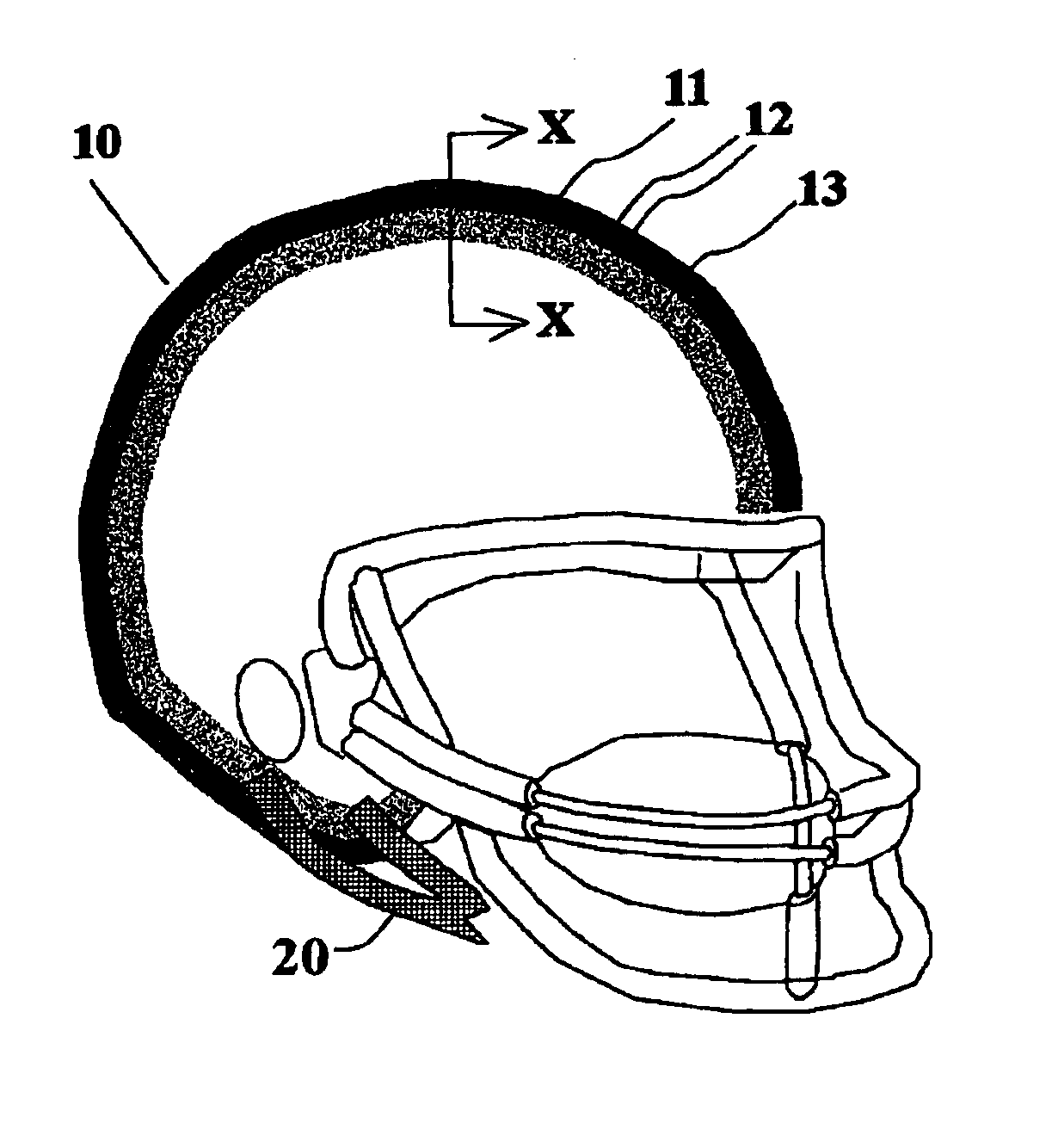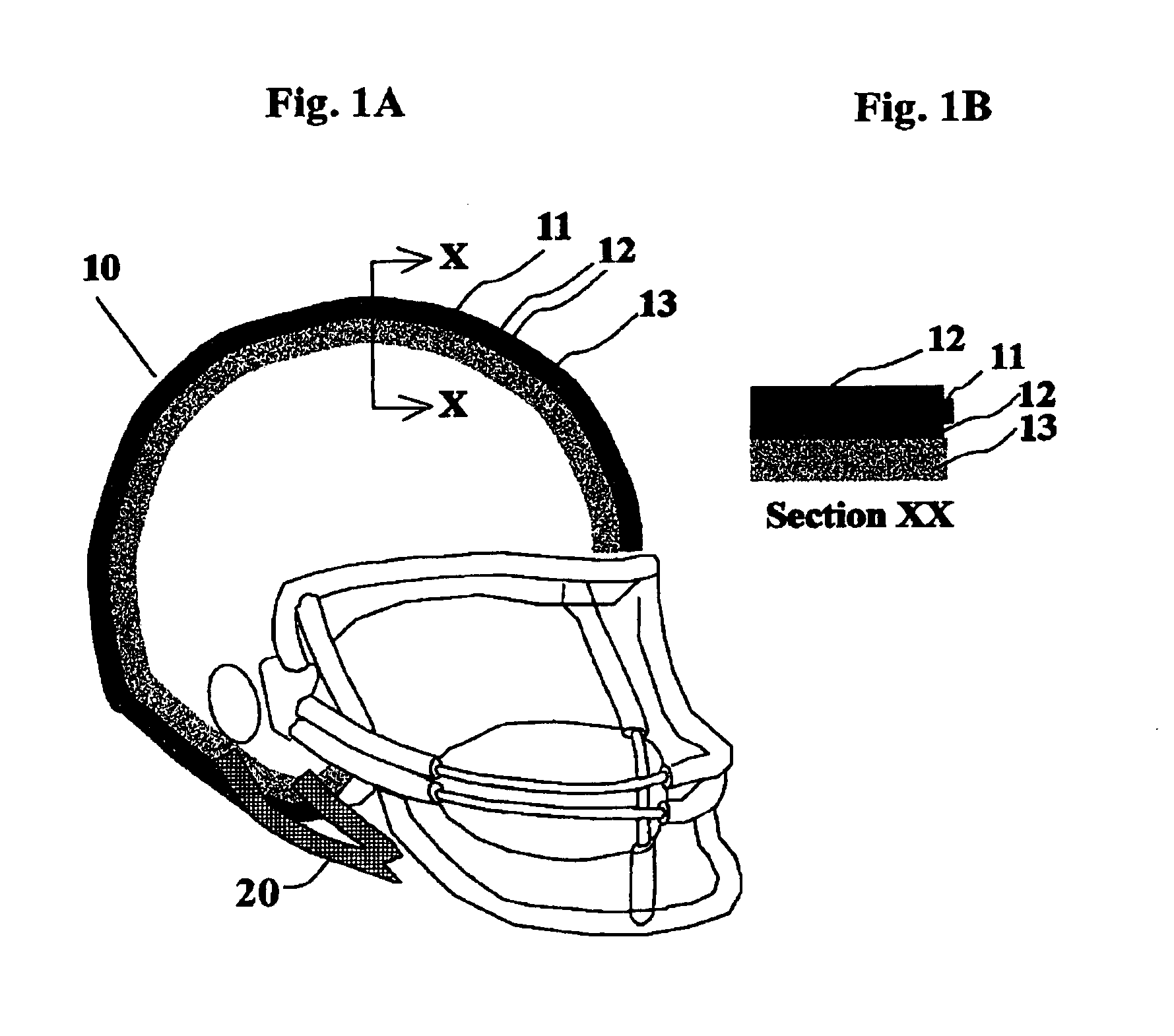Lightweight impact resistant helmet system
a helmet and lightweight technology, applied in the field of helmets, can solve the problems of limiting the service life of the helmet, user ignorance of the decreased impact protection of the helmet, and difficulty in wearing the helmet, and achieve the effects of easy repair, increased mobility of players, and low manufacturing and construction costs
- Summary
- Abstract
- Description
- Claims
- Application Information
AI Technical Summary
Benefits of technology
Problems solved by technology
Method used
Image
Examples
Embodiment Construction
[0033]One of the major disadvantages of currently used football helmets is that they are heavy, bulky and cumbersome to wear. These helmets protect the football player due to the stiff structure of the helmet shell, which carries energy absorbing absorbent pads. Due to their heavy weight, they readily produce bodily injury to other players brought into contact therewith during blocking and tackling events. A significant factor reducing this injury potential involves the overall weight reduction achieved by the helmet system without compromise to its impact absorbing characteristics.
[0034]The invention is directed to a high strength, crack-proof, chemically stable helmet system especially suited for contact sports, such as football, baseball, hockey, cricket and the like. Unlike conventional helmet shells, which are composed of molded polycarbonate plastics (typically Lexan®), the helmet system of the present invention is composed of Kevlar® or Spectra® in a polymeric matrix with lon...
PUM
 Login to View More
Login to View More Abstract
Description
Claims
Application Information
 Login to View More
Login to View More - R&D
- Intellectual Property
- Life Sciences
- Materials
- Tech Scout
- Unparalleled Data Quality
- Higher Quality Content
- 60% Fewer Hallucinations
Browse by: Latest US Patents, China's latest patents, Technical Efficacy Thesaurus, Application Domain, Technology Topic, Popular Technical Reports.
© 2025 PatSnap. All rights reserved.Legal|Privacy policy|Modern Slavery Act Transparency Statement|Sitemap|About US| Contact US: help@patsnap.com


